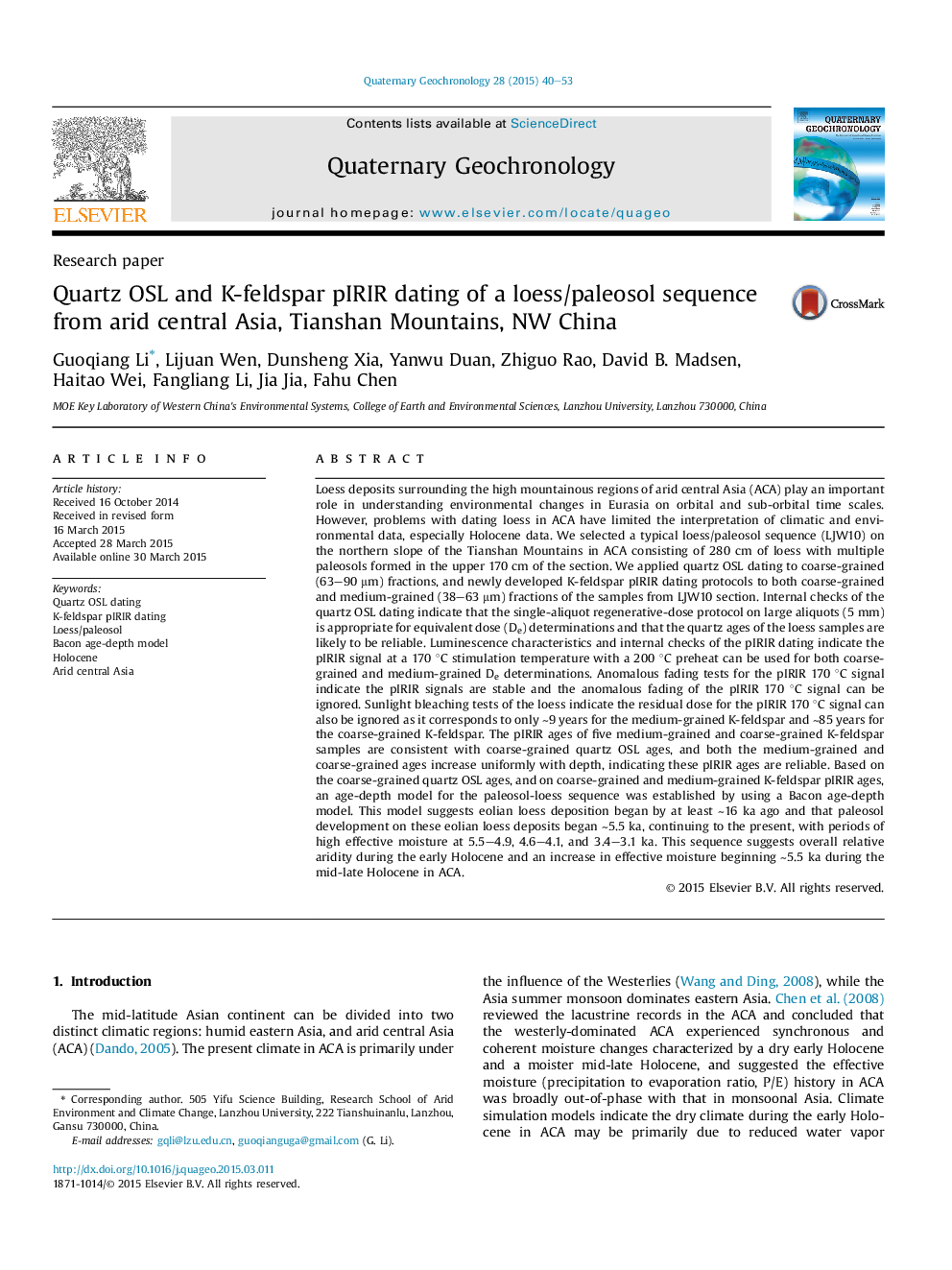| کد مقاله | کد نشریه | سال انتشار | مقاله انگلیسی | نسخه تمام متن |
|---|---|---|---|---|
| 4724873 | 1639848 | 2015 | 14 صفحه PDF | دانلود رایگان |

• K-feldspar pIRIR 170 °C signal can be used to date Holocene loess in ACA.
• The K-feldspar pIRIR ages are consistent with their corresponding quartz OSL ages.
• Loess deposition started ∼16 ka ago with paleosol formation between ∼6 ka and present.
• ACA was arid during the early Holocene and humid during the mid-late Holocene.
Loess deposits surrounding the high mountainous regions of arid central Asia (ACA) play an important role in understanding environmental changes in Eurasia on orbital and sub-orbital time scales. However, problems with dating loess in ACA have limited the interpretation of climatic and environmental data, especially Holocene data. We selected a typical loess/paleosol sequence (LJW10) on the northern slope of the Tianshan Mountains in ACA consisting of 280 cm of loess with multiple paleosols formed in the upper 170 cm of the section. We applied quartz OSL dating to coarse-grained (63–90 μm) fractions, and newly developed K-feldspar pIRIR dating protocols to both coarse-grained and medium-grained (38–63 μm) fractions of the samples from LJW10 section. Internal checks of the quartz OSL dating indicate that the single-aliquot regenerative-dose protocol on large aliquots (5 mm) is appropriate for equivalent dose (De) determinations and that the quartz ages of the loess samples are likely to be reliable. Luminescence characteristics and internal checks of the pIRIR dating indicate the pIRIR signal at a 170 °C stimulation temperature with a 200 °C preheat can be used for both coarse-grained and medium-grained De determinations. Anomalous fading tests for the pIRIR 170 °C signal indicate the pIRIR signals are stable and the anomalous fading of the pIRIR 170 °C signal can be ignored. Sunlight bleaching tests of the loess indicate the residual dose for the pIRIR 170 °C signal can also be ignored as it corresponds to only ∼9 years for the medium-grained K-feldspar and ∼85 years for the coarse-grained K-feldspar. The pIRIR ages of five medium-grained and coarse-grained K-feldspar samples are consistent with coarse-grained quartz OSL ages, and both the medium-grained and coarse-grained ages increase uniformly with depth, indicating these pIRIR ages are reliable. Based on the coarse-grained quartz OSL ages, and on coarse-grained and medium-grained K-feldspar pIRIR ages, an age-depth model for the paleosol-loess sequence was established by using a Bacon age-depth model. This model suggests eolian loess deposition began by at least ∼16 ka ago and that paleosol development on these eolian loess deposits began ∼5.5 ka, continuing to the present, with periods of high effective moisture at 5.5–4.9, 4.6–4.1, and 3.4–3.1 ka. This sequence suggests overall relative aridity during the early Holocene and an increase in effective moisture beginning ∼5.5 ka during the mid-late Holocene in ACA.
Journal: Quaternary Geochronology - Volume 28, June 2015, Pages 40–53